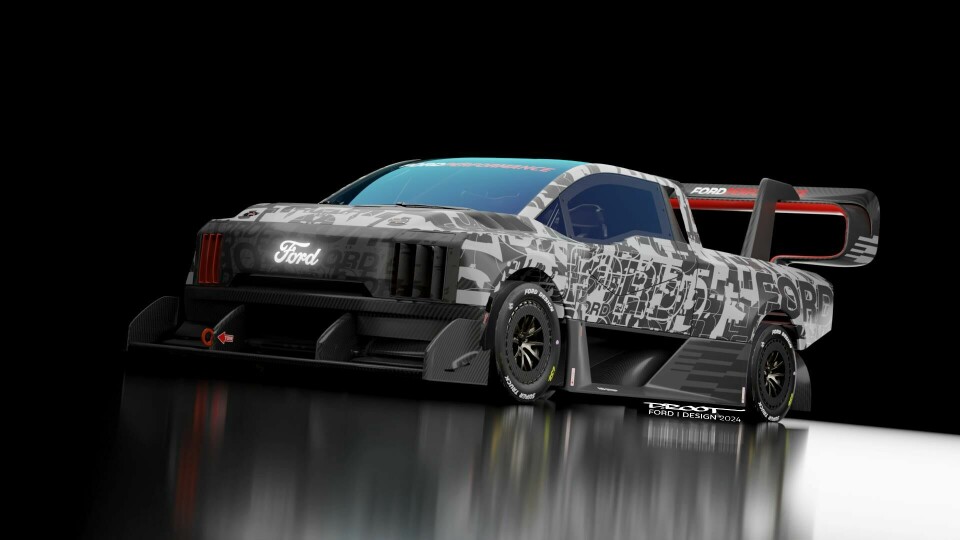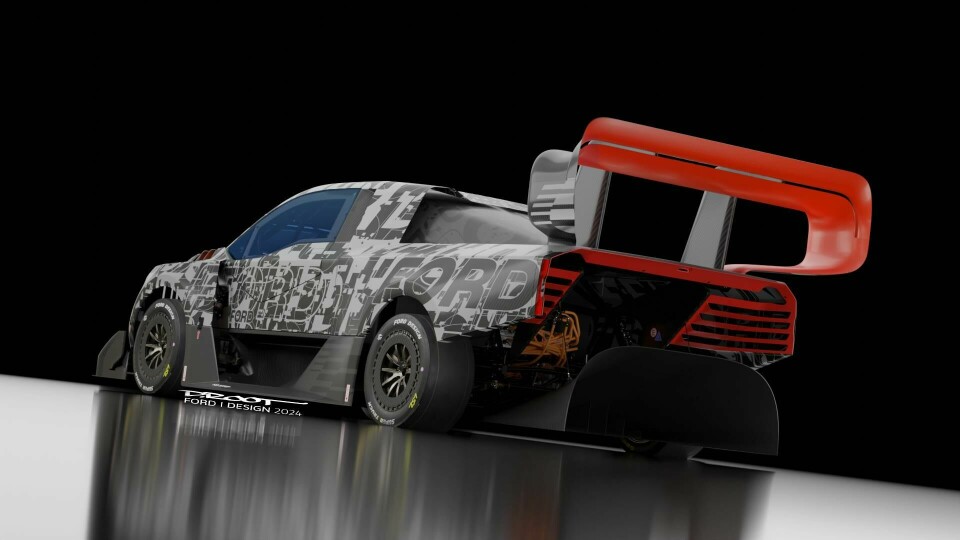
Ford’s superfast SuperTruck
With a design process as speedy as the end result itself, Ford’s design team leaned into its digital design expertise and team spirit to create the SuperTruck, which scaled Pike’s Peak 11 seconds quicker than its nearest rival
This year, the International Hill Climb at Pikes Peak was won by a truck. Admittedly, this was no ordinary truck. And no ordinary driver for that matter. The truck Romain Dumas piloted up the Colorado peak was designed by Ford in Dearborn with the express intention of taking on the mountain and winning.
“It had to be a truck,” says Paul Wraith, program chief designer at Ford Motor Company. “We are pretty good at them.” And understandably so. Sales show that for many, Ford is the truck maker in America. A follow-up to the riotous SuperVans project, which reinterpreted the iconic Transit van, this time it is the F-150 that has got the treatment.
Though it has retained its essential truckiness, the Ford F-150 Lighting SuperTruck sits far lower than its namesake, anchored to the tarmac by a truly enormous rear spoiler and a diffuser that must measure around six feet and, rather fittingly for the task at hand, looks like a oversized Alphorn. Equally, the front splitter could double as a JCB front bucket.

It is a full EV so the hood is truncated accordingly, pushing the cab ever further forward allowing for the all-important flatbed at the rear. Images show a nest of pipework and exposed structures under the form. Behind the headline grabbing times – the F-150 dashed up the mountain 11 seconds ahead of its nearest rival – lies a design process that reflected similar alacrity.
We believed that if we made it fast, it would look cool
“It was a purely digital process,” explains Wraith when CDN met him and a small portion of his team in the Ford Experience Centre in Dearborn. “We didn’t create any physical models.” The project started with the classic back of the gas bill doodles that ended up on a Miro board. From there, the project took on a life of its own with designs drawn up digitally on Blender and Gravity Sketch, then fed that data into aerodynamic modelling software with the resulting output fed back into the design team to make the necessary tweaks.
There were some pretty spooky numbers involved. The SuperTruck has 2000 horsepower and generates 6000 pounds of downforce, but where the design team has been most successful is synthesising said data into a form that didn’t resemble a pebble. “We needed to get the balance right between aero and it not looking too awful. But we believed that if we made it fast, it would look cool,” explains Wraith. Mission accomplished in that regard.
The overhead plan images, produced by the aerodynamic digital mapping but with the vibrance of a heatmap, were almost works of art in themselves. Ditto the early sketches, which show just how quickly the team coalesced around the truck idea (Wraith has clearly got a promising talent in Jill Dougherty). Plus, Clay Mastin knows his way around an interior, which, thanks to the state-of-the-art VR headsets that CDN experienced (virtually) first hand by simply stepping inside the digital model.
Indeed, senior exterior designer Dave Root was supported by a stellar digital software team using VR headsets to validate work at high speed. “We had three or four liveries, which we were comparing in VR from multiple points of view.” he explains before the team settled on a suitably aggressive battle grey camouflage. Aside from the technical wizardry and world-beating end result, the real standout from the Supertrucks project was the willingness and ability for Ford to come together as a team and push themselves into new territory. As Wraith points out, there was no three-line whip to cajole people into getting involved.
Instead, those that were interested and had an idea were absorbed into it. Heartening for Ford’s creative leadership as new skills in Blender, Gravity Sketch and VRED were discovered and honed while building a spirit among the team that wanted to go the extra mile, even when not required. For example, beyond the truck itself are some pretty incredible digital animations by Root. The project passed in a blink of an eye. “I have never seen it in real life and to be honest I don’t feel I need to,” says Wraith. “It is somewhere in the world at the moment.” On to the next one, then.












